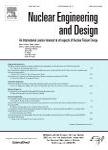版权所有:内蒙古大学图书馆 技术提供:维普资讯• 智图
内蒙古自治区呼和浩特市赛罕区大学西街235号 邮编: 010021

作者机构:MIT 77 Massachusetts Ave Cambridge MA 02139 USA
出 版 物:《NUCLEAR ENGINEERING AND DESIGN》 (Nucl Eng Des)
年 卷 期:2025年第433卷
核心收录:
学科分类:08[工学] 0827[工学-核科学与技术]
主 题:Reinforcement Learning Power uprate Fuel performance analysis Deep learning ensemble Surrogate modeling Loading pattern optimization
摘 要:Increasing the power output of existing nuclear power plants, known as performing a power uprate, could result in improved economic performance, especially with the recent introduction of production tax credits. However, beyond the neutronics and thermal-hydraulics analysis, a fuel performance analysis must be conducted due to the uprate s impact on core reload fuel licensing limits. Key fuel performance limits include pellet-cladding interaction, plenum pressure, and fuel temperature. Traditionally, these QoI are evaluated after core reload analyses using dedicated codes, which require significant computation time. Integrating QoI analyses within an optimization framework is advantageous, but necessitates tools capable of performing tens of thousands of these evaluations efficiently. This paper explores the use of fast-running surrogates to replace resource- intensive codes within a Reinforcement Learning-based core reload optimizer. A standard Westinghouse-type 4-loop Pressurized Water Reactor core rated at 111.7 kW/L and two uprates-118 kW/L on an 18-month cycle and 126.3 kW/L on a 12-month cycle-are examined. Deep learning ensemble models for each scenario were evaluated and integrated into the optimization process. Subsequently, the fuel performances of the best solutions were evaluated using the dedicated codes. Although the improvements in fuel performance were marginal, significant enhancements were observed in neutronics and thermal hydraulics licensing limits. The superiority of combining QoI together rather than decoupling them as it is classically done during optimization was observed consistently across different optimization simulation sets. This highlights an important mechanism of these novel algorithms: RL agents can leverage intrinsic physical correlations between objectives and constraints to navigate the search space optimally. Asa result, we suggest to perform the core reload design process coupling all core reload analysis limits.